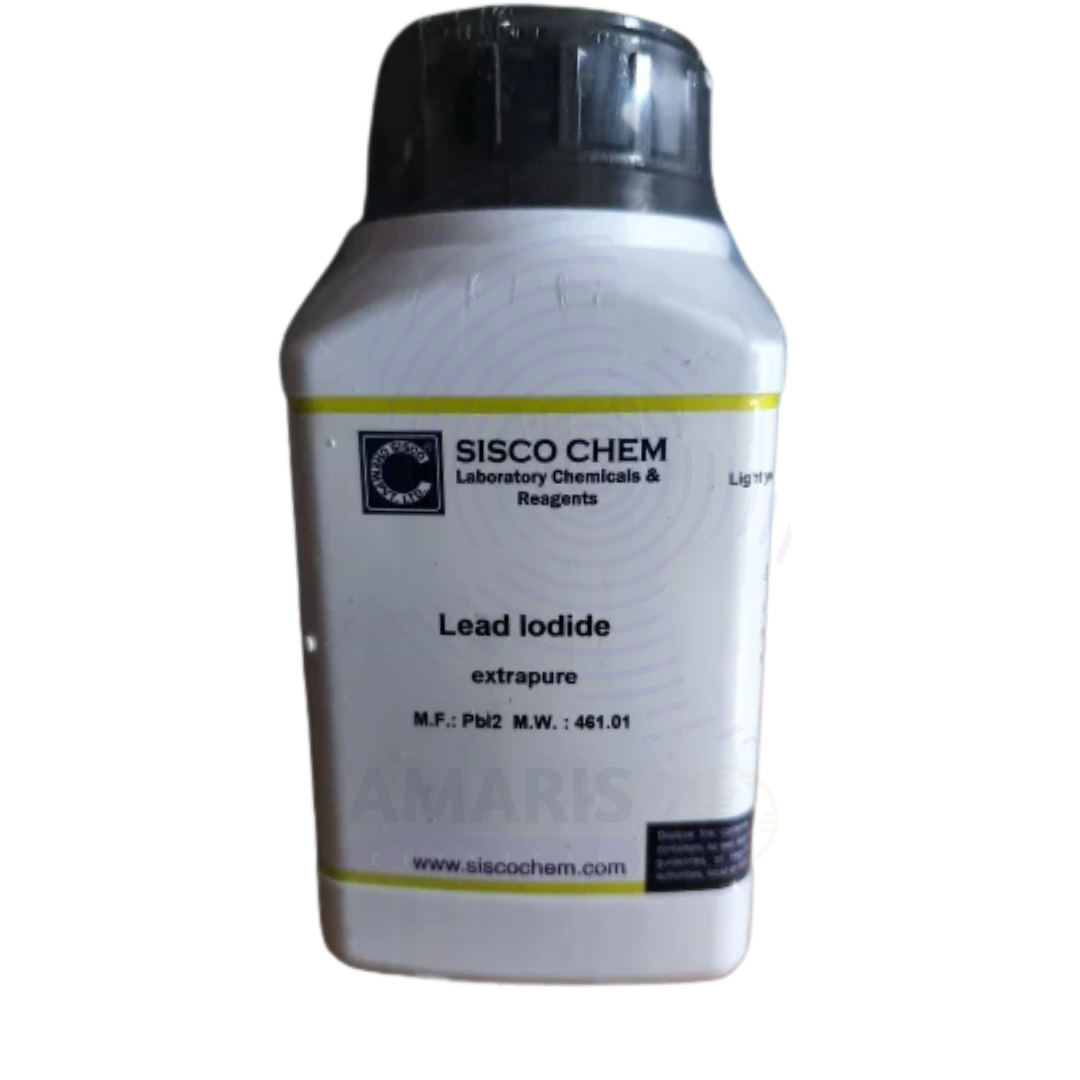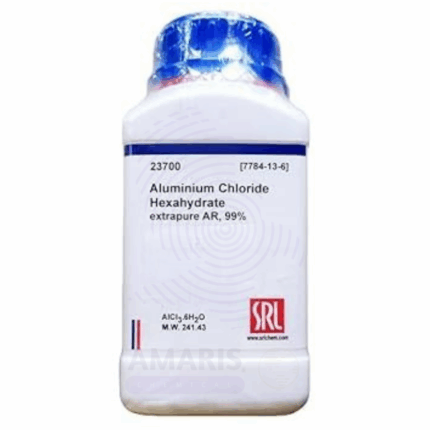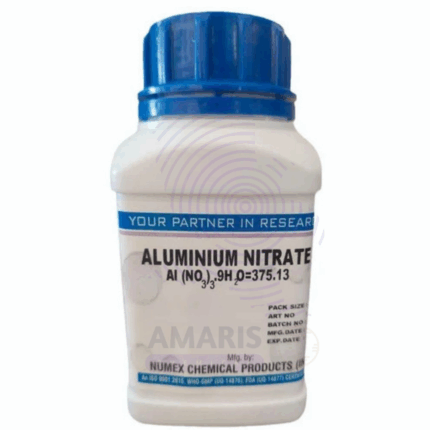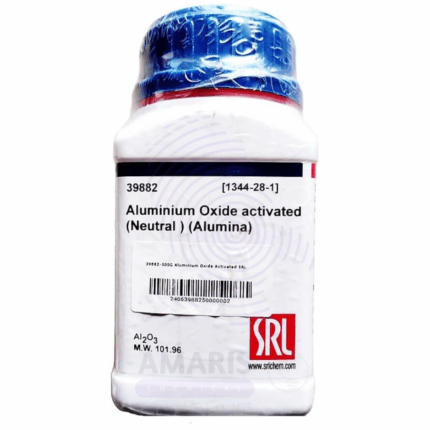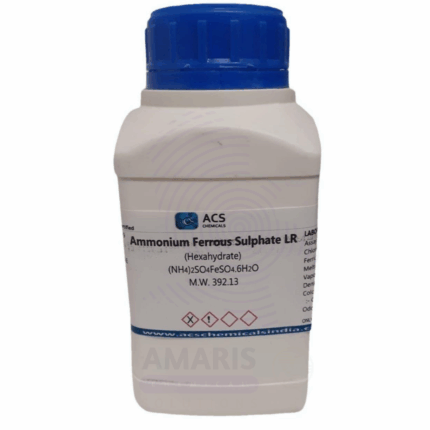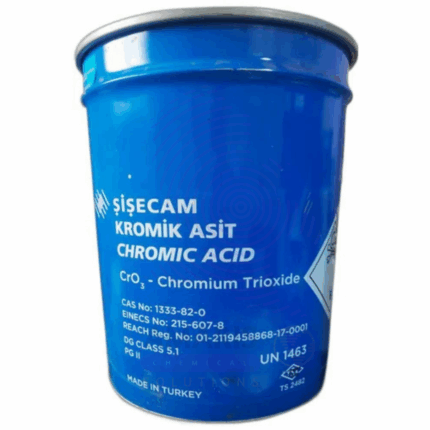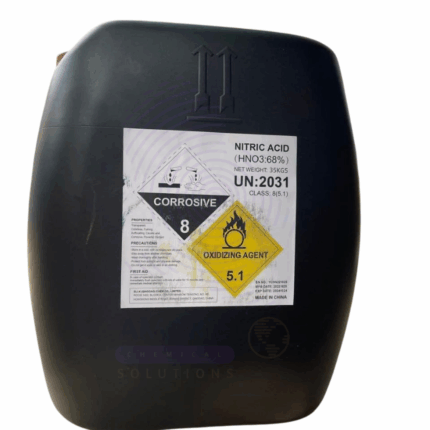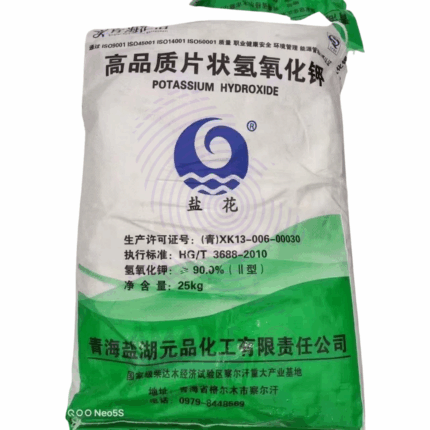

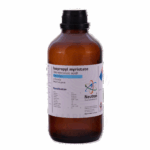
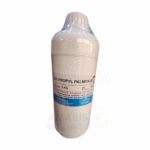
Lead Iodide Extra Pure
$ 18.00 Original price was: $ 18.00.$ 17.89Current price is: $ 17.89.
Lead Iodide Extra Pure is a bright yellow crystalline compound with the formula PbI₂, known for its striking color and high chemical purity, making it ideal for laboratory and research use. It is commonly used in materials science, especially in the fabrication of perovskite solar cells and semiconductors, due to its optical properties and ability to form thin films. In academic research, it plays a role in crystal growth experiments, and its distinct color change upon heating serves as a classic demonstration in chemistry education. Owing to its lead content, appropriate handling precautions and environmental safeguards are essential when working with this compound.
Lead Iodide Extra Pure
Primary Uses
- Precipitation Reaction Demonstrations:
- Widely used in teaching labs to demonstrate double displacement and precipitation reactions, notably the formation of bright yellow PbI₂
- Perovskite Solar Cell Research
- Serves as a key precursor in the synthesis of lead halide perovskites, which are being studied for solar cell and optoelectronic
Secondary Uses
- Crystallization Studie
- Used in labs for crystal growth experiments due to its vivid yellow, plate-like crystalline structure.
- Study of Light Sensitivity
- Useful in examining photochemical decomposition processes and sensitivity to light, aiding in material science research.
- Inorganic Chemistry Synthesis
- Functions as a reagent in preparing other lead or iodide-containing compounds.
| PACK SIZE |
500 grams Plastic Tin |
|---|
-
Basic Identification Attributes
- Chemical Name: Lead(II) Iodide
- Synonyms: Plumbous iodide
- Chemical Formula: PbI₂
- CAS Number: 10101-63-0
- Molecular Weight:01 g/mol
- Grade: Extra Pure (suitable for analytical and educational use)
- Appearance: Bright yellow crystalline powder
- Solubility: Slightly soluble in cold water; more soluble in hot water
- Melting Point: ~402°C
- Odor: Odorless
-
Safety & Hazard Attributes
GHS Classification:
- Acute toxicity (oral) – Category 4
- Reproductive toxicity – Category 1A
- Specific Target Organ Toxicity (Repeated Exposure) – Category 2
- Hazardous to aquatic environment – Chronic Category 1
Hazard Statements:
- H302: Harmful if swallowed
- H360: May damage fertility or the unborn child
- H373: May cause damage to organs through prolonged or repeated exposure
- H410: Very toxic to aquatic life with long lasting effects
Precautionary Statements:
- P201: Obtain special instructions before use
- P273: Avoid release to the environment
- P280: Wear protective gloves/protective clothing/eye protection
- P301+P312: IF SWALLOWED: Call a POISON CENTER/doctor if you feel unwell
- P308+P313: If exposed or concerned: Get medical advice
Personal Protective Equipment (PPE):
- Safety goggles
- Lab coat
- Nitrile gloves
- Dust mask or fume hood
First Aid Measures:
- Inhalation: Move to fresh air and seek medical attention if symptoms occur
- Skin Contact: Wash thoroughly with soap and water
- Eye Contact: Rinse cautiously with water for several minutes
- Ingestion: Rinse mouth; seek medical attention immediately
Fire Hazards:
- Non-flammable; use standard extinguishing agents for nearby combustibles
- Decomposes to release toxic fumes of lead and iodine
-
Storage & Handling Attributes
Storage Conditions:
- Store in a tightly sealed container
- Keep in a cool, dry, well-ventilated place
- Protect from moisture and incompatible substances (e.g., acids, strong oxidizers)
Handling Tips:
- Use under a fume hood
- Avoid dust generation
- Wash thoroughly after handling
- Prevent environmental release
-
Laboratory Applications
Primary Uses:
- Demonstrations of precipitation reactions and halide chemistry
- Study of crystal structure and semiconductor properties
- Used in research on perovskite solar cells and X-ray detectors
Secondary Uses:- Teaching material for solubility rules and double displacement reactions
- Materials science research involving heavy metal halides
- Historical pigment studies (limited to academic settings)
SAFETY PRECAUTIONS
Personal Protective Equipment (PPE):
- Wear a lab coat, nitrile gloves, and chemical splash goggles.
- Use a particulate respirator or handle inside a fume hood to prevent inhalation of dust.
Handling:
- Avoid contact with skin, eyes, and clothing.
- Prevent dust generation and avoid inhaling dust.
- Wash hands thoroughly after handling and before eating or drinking.
Storage:
- Store in a tightly closed container in a cool, dry, and well-ventilated
- Protect from moisture, incompatible substances, and light.
- Keep away from acids, oxidizers, and ammonium salts.
FIRST AID MEASURES
Inhalation:
- Move people to fresh air.
- Administer oxygen if breathing is difficult.
- Seek medical attention if symptoms persist.
Skin Contact:
- Remove any contaminated clothing.
- Wash thoroughly with soap and water.
- Get medical advice if irritation occurs.
Eye Contact:
- Rinse cautiously with plenty of water for several minutes.
- Remove contact lenses if present and easy to do.
- Continue rinsing and seek medical attention.
Ingestion:
- Do not induce vomiting.
- Rinse mouth with water.
- Seek immediate medical help.
- Toxic due to lead content – may cause systemic health effects.
FIRE FIGHTING MEASURES
Flammability:
- Not flammable. May decompose upon heating, releasing toxic fumes.
Extinguishing Media:
- Use dry chemicals, foam, or carbon dioxide (CO₂).
- Water spray may be used to cool containers.
Hazardous Combustion Products:
- May release lead oxides, iodine vapors, and hydrogen iodide gas when heated.
Firefighter Protection:
- Wear self-contained breathing apparatus (SCBA) and full protective suit.
- Prevent run-off from contaminating water sources.


 Preservatives(food)
Preservatives(food) Flavor Enhancers
Flavor Enhancers Acidulants
Acidulants Sweeteners
Sweeteners Antioxidants
Antioxidants Colorants(food)
Colorants(food) Nutraceutical Ingredients (food)
Nutraceutical Ingredients (food) Nutrient Supplements
Nutrient Supplements Emulsifiers
Emulsifiers
 Collectors
Collectors Dust Suppressants
Dust Suppressants Explosives and Blasting Agents
Explosives and Blasting Agents Flocculants and Coagulants
Flocculants and Coagulants Frothers
Frothers Leaching Agents
Leaching Agents pH Modifiers
pH Modifiers Precious Metal Extraction Agents
Precious Metal Extraction Agents
 Antioxidants(plastic)
Antioxidants(plastic) Colorants (Pigments, Dyes)
Colorants (Pigments, Dyes) Fillers and Reinforcements
Fillers and Reinforcements Flame Retardants
Flame Retardants Monomers
Monomers Plasticizers
Plasticizers Polymerization Initiators
Polymerization Initiators Stabilizers (UV, Heat)
Stabilizers (UV, Heat)
 Antifoaming Agents
Antifoaming Agents Chelating Agents
Chelating Agents Coagulants and Flocculants
Coagulants and Flocculants Corrosion Inhibitors
Corrosion Inhibitors Disinfectants and Biocides
Disinfectants and Biocides Oxidizing Agents
Oxidizing Agents pH Adjusters
pH Adjusters Scale Inhibitors( water)
Scale Inhibitors( water)
 Antioxidants(cosmetic)
Antioxidants(cosmetic) Emollients
Emollients Fragrances and Essential Oils
Fragrances and Essential Oils Humectants
Humectants Preservatives
Preservatives Surfactants(cosmetic)
Surfactants(cosmetic) Thickeners
Thickeners UV Filters
UV Filters
 Fertilizers
Fertilizers Soil Conditioners
Soil Conditioners Plant Growth Regulators
Plant Growth Regulators Animal Feed Additives
Animal Feed Additives Biostimulants
Biostimulants Pesticides (Herbicides, Insecticides, Fungicides)
Pesticides (Herbicides, Insecticides, Fungicides)
 Active Pharmaceutical Ingredients (APIs)
Active Pharmaceutical Ingredients (APIs) Excipients
Excipients Solvents(pharmaceutical)
Solvents(pharmaceutical) Antibiotics
Antibiotics Antiseptics and Disinfectants
Antiseptics and Disinfectants Vaccine Adjuvants
Vaccine Adjuvants Nutraceutical Ingredients (pharmaceutical)
Nutraceutical Ingredients (pharmaceutical) Analgesics & Antipyretics
Analgesics & Antipyretics
 Analytical Reagents
Analytical Reagents Solvents(lab)
Solvents(lab) Chromatography Chemicals
Chromatography Chemicals Spectroscopy Reagents
Spectroscopy Reagents microbiology-and-cell-culture-reagents
microbiology-and-cell-culture-reagents Molecular Biology Reagents
Molecular Biology Reagents Biochemical Reagents
Biochemical Reagents Inorganic and Organic Standards
Inorganic and Organic Standards Laboratory Safety Chemicals
Laboratory Safety Chemicals Specialty Laboratory Chemicals(Special Laboratory Equipment)
Specialty Laboratory Chemicals(Special Laboratory Equipment)
 Demulsifiers
Demulsifiers Hydraulic Fracturing Fluids
Hydraulic Fracturing Fluids Scale Inhibitors(oil)
Scale Inhibitors(oil) Surfactants(oil)
Surfactants(oil) Drilling Fluids
Drilling Fluids
 Dyes and Pigments
Dyes and Pigments Bleaching Agents
Bleaching Agents Softening Agents
Softening Agents Finishing Agents
Finishing Agents Antistatic Agents
Antistatic Agents
 Admixtures
Admixtures Waterproofing Agents
Waterproofing Agents Sealants and Adhesives
Sealants and Adhesives Curing Compounds
Curing Compounds Concrete Repair Chemicals
Concrete Repair Chemicals Anti-Corrosion Coatings
Anti-Corrosion Coatings
 Surfactants(cleaning)
Surfactants(cleaning) Builders
Builders Enzymes
Enzymes Solvents (Cleaning)
Solvents (Cleaning) Fragrances
Fragrances
 Electronic Chemicals
Electronic Chemicals Catalysts
Catalysts Lubricants
Lubricants Photographic Chemicals
Photographic Chemicals Refrigerants
Refrigerants Automotive chemicals
Automotive chemicals Pyrotechnic Chemicals
Pyrotechnic Chemicals
 Biodegradable Surfactants
Biodegradable Surfactants Bio-based Solvents
Bio-based Solvents Renewable Polymers
Renewable Polymers Carbon Capture Chemicals
Carbon Capture Chemicals Wastewater Treatment Chemicals
Wastewater Treatment Chemicals
 Pigments
Pigments Solvents(paint)
Solvents(paint) Specialty Coatings
Specialty Coatings Binders/Resins
Binders/Resins Additives
Additives Driers
Driers Anti-Corrosion Agents
Anti-Corrosion Agents Functional Coatings
Functional Coatings Application-Specific Coatings
Application-Specific Coatings
 Fresh Herbs
Fresh Herbs Ground Spices
Ground Spices Whole Spices
Whole Spices Spice Blends
Spice Blends Dried Herbs
Dried Herbs
 Leavening Agents
Leavening Agents Dough Conditioners
Dough Conditioners Flour Treatments
Flour Treatments Fat Replacers
Fat Replacers Decoratives
Decoratives Preservatives(baking)
Preservatives(baking)
 Plasticizers & Softeners
Plasticizers & Softeners Reinforcing Agents
Reinforcing Agents Adhesion Promoters
Adhesion Promoters Vulcanizing Agents
Vulcanizing Agents Antidegradants
Antidegradants Blowing Agents
Blowing Agents Fillers & Extenders
Fillers & Extenders Accelerators & Retarders
Accelerators & Retarders
